Here we were, on the final stretch of the Great Himalaya Trail. Gamghadi to Hilsa via Simikot. It felt like we were so close, but it still took ten days. If you say, “I’m going on a ten day hiking trip,” it sounds really long! And it is!
We left Gamghadi via the hospital, where Mike had his second rabies shot. It would be a fair amount of road after crossing a large bridge over the raging Mugu Karnali Nadi. In Nepal “nadi” means river, while “khola” means river, stream or creek. The thing is, in the Himalaya a “stream” can be wider than the River Murray in Australia or the Bow River in Canada!
Luma, a village on the first day introduced us to new architecture in the Humla region. We also descended to a suspension bridge riddled with stinging nettles. Two young women ran across the bridge with scythes to cut the nettles. Mingma and Mike were ahead of me, so I watched this development with a positive impression. As we crossed the bridge the young ladies enforced a TikTok appearance with them, where I did my awkward best dance while sweating profusely in the humid sun. Leaving the bridge a larger group of women awaited, and two held a blanket across the exit. I had not noticed what Mingma and Mike had done, but saw them just beyond the group… On the blanket was NPR500, and it dawned on me I may need to pay some kind of bridge crossing fee to the huddled bodies around me. This was something new. I reached into my pocket, and added rupees to pass. The older women demanded more, making gestures for sore stomachs. I wasn’t falling for it, and already felt conflicted about rewarding their behaviour, and luckily moved through with the assistance of the young “nettle removing TikTokkers” who told their didis and amas “Okay okay, let her go through.”
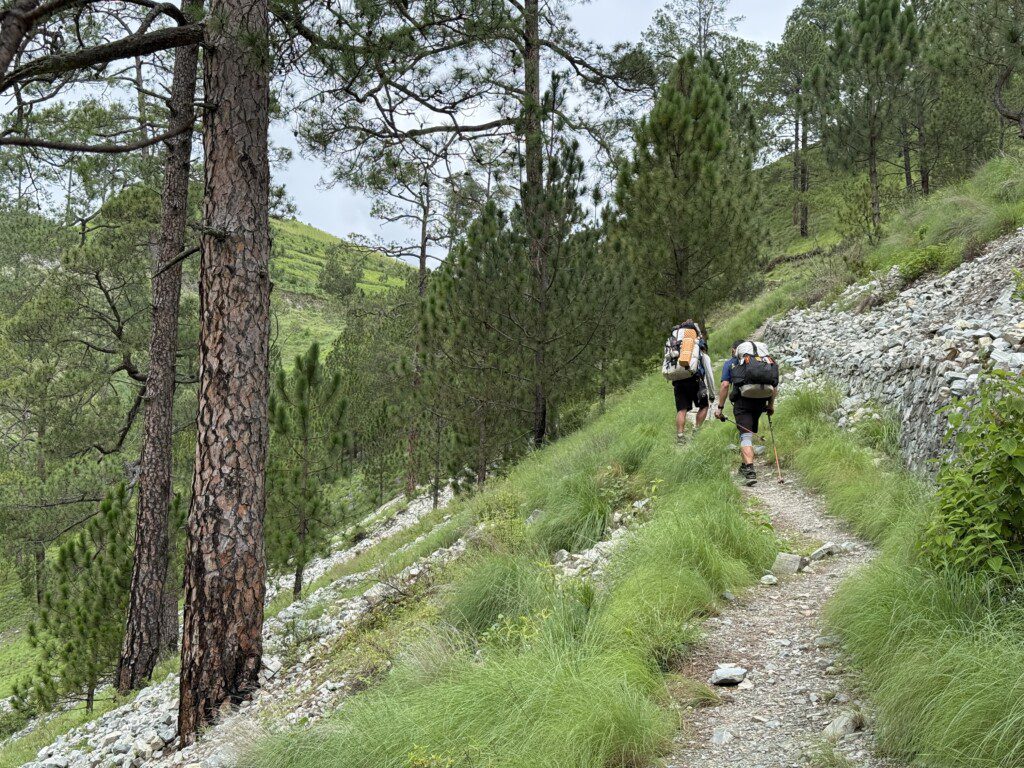
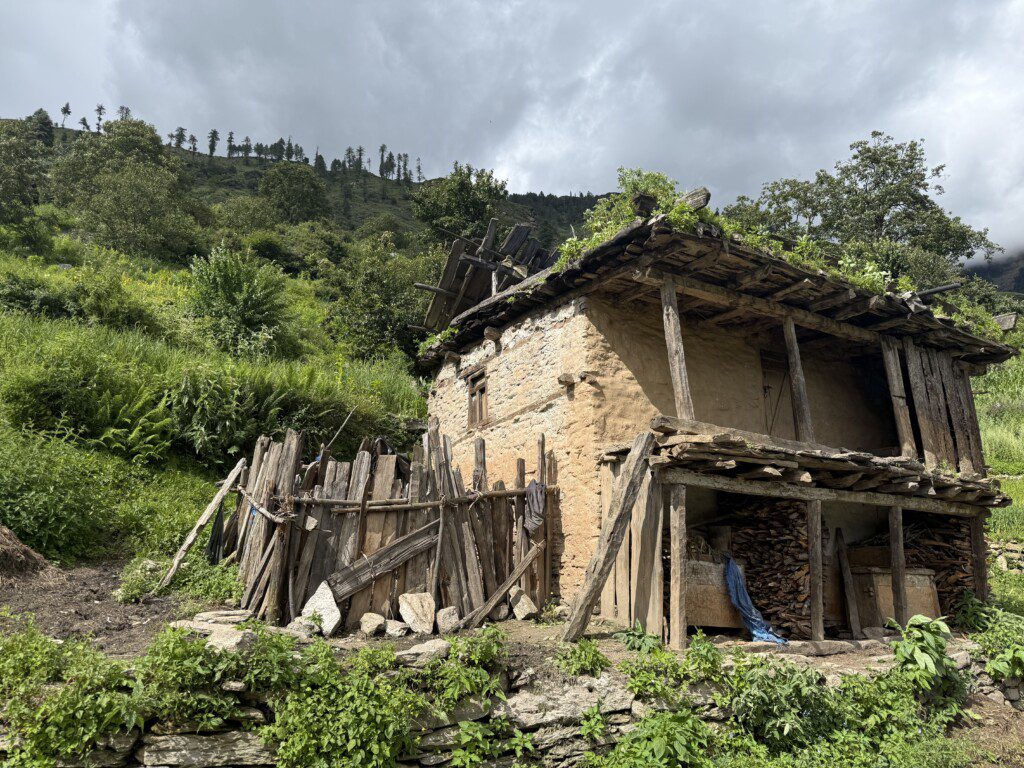
The experience only grew stranger as we moved closer to the houses; human excrement and stinging nettles made for delicate steps below the village proper. Local people stared, understandably as it is not an area foreigners frequent, and more made gestures about wanting medicine for their sore stomachs. I hypothesized with Mingma and Mike that the lack of toilets may be making everyone sick. Interestingly, days later reaching a village just below Simikot, we spoke to a health care worker who explained gastritis is a common ailment in the area. While they were many kilometres away, it made me wonder if there is a link and perhaps the worker meant gastroenteritis in English. The lack of sanitation, e.g. no toilets upstream for many homes would mean many sick folks. Human poop is the worst! We will inform some relevant NGOs of the situation, as it could be a simple known solution. The same plight was faced by people in Bam, a village further along the trail from Luma.
From Gamghadi to Simikot we had some flexibility on where exactly to sleep, which was lucky as the assumptions I made while planning where to camp were unhelpful! Luckily we found campsites, paid or donated to locals and schools for the privilege, and could access water while camping. Not all places we stayed had toilets, so it was a case of finding appropriate spots to dig a hole further along the trail the following morning. In the evenings when we camped at schools we had plenty of company, and some students took the opporunity to either practice some English or practice a lot of giggling at the foreigners and their tents and interesting sleeping mats and cooking.
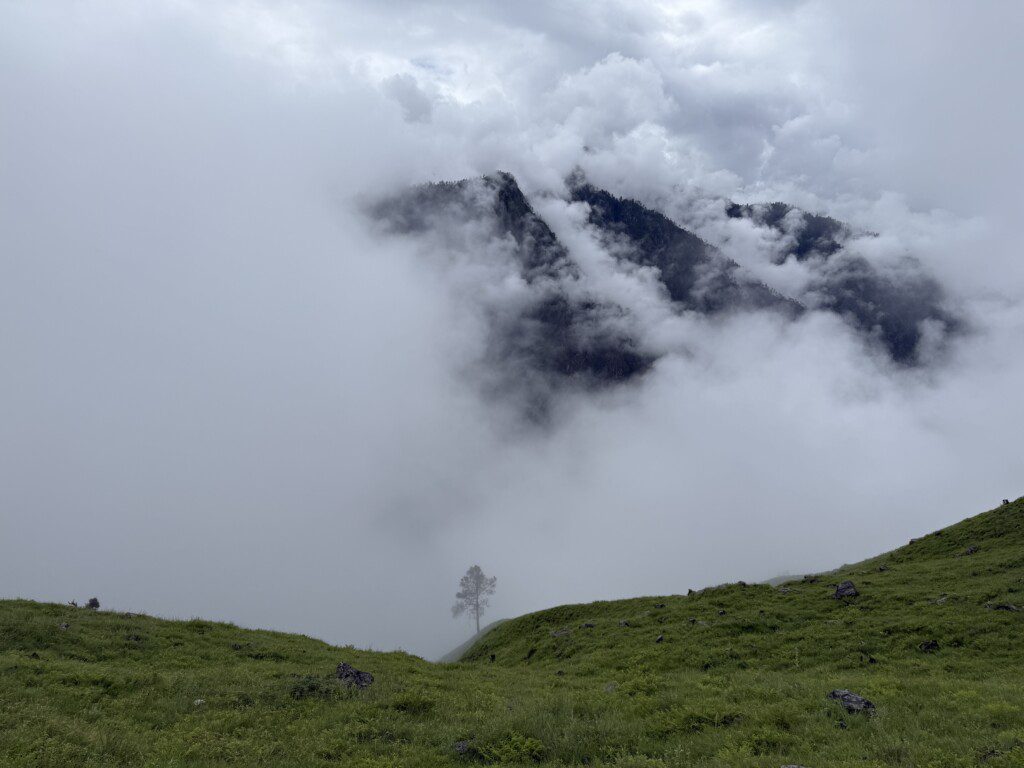
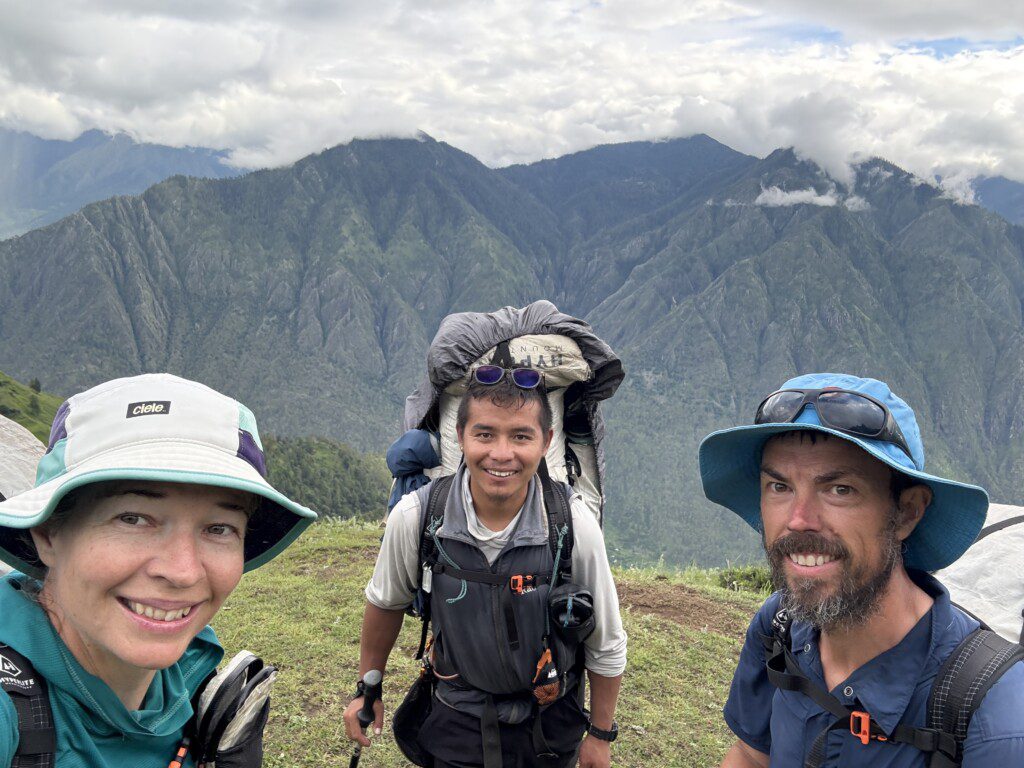
We had two final passes to cross: Margor Lek Bhanjyang ~4000m between Punkha Khola and Simikot, and Nara La 4560m on the last day. It felt fitting to have a bit of altitude on the final day, however it didn’t impact any of us much, we were moving like machines. I think I felt the altitude more on the lower pass than the higher one! The lack of oxygen paired with exertion will always be a fascinating journey with one’s body.
Mingma had received some fantastic news in Gamghadi – to join an expedition on Manaslu (8,163m) as a guide this September! We were pumped for him as he is strong as an ox and would be great with clients on the big peaks. It will also a new feather in his 8000m cap with three ascents of Everest. This, paired with covering some longer distances, meant we decided to scrap a rest / zero day in Simikot and instead wake early to climb to the village, get Mike’s final rabies shot at the local hospital, and use the afternoon to rest up before the final three-day push to Hilsa.
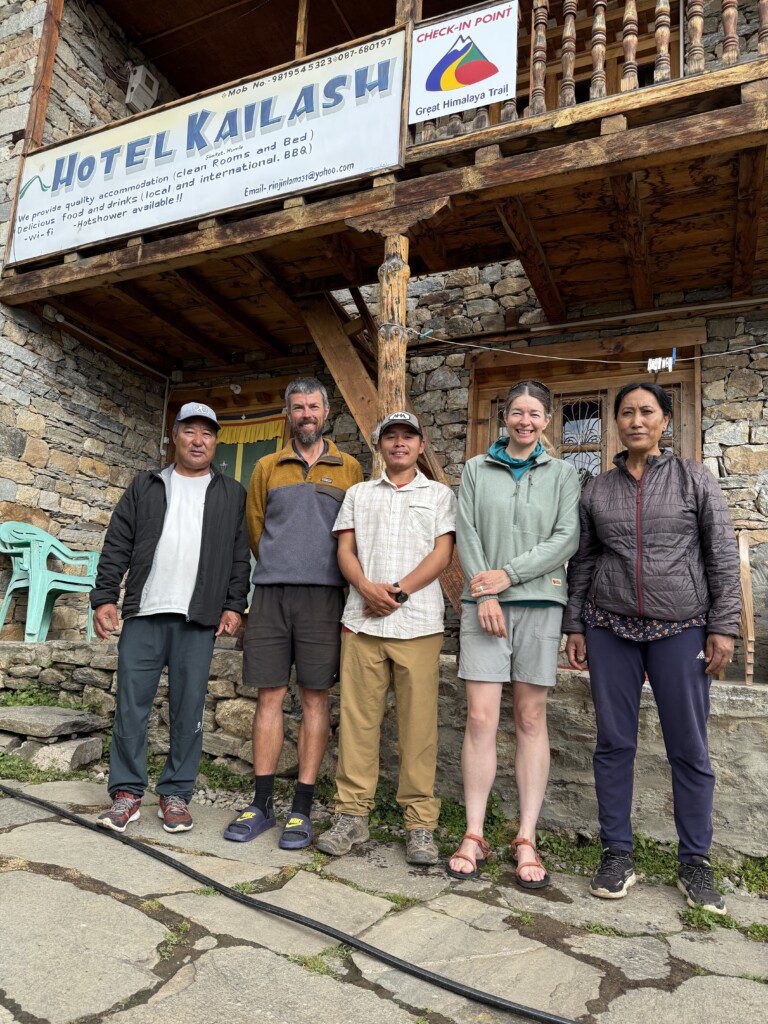
On the last three days on the Great Himalaya Trail we covered 40km and 1,500m up and down, 25km and 1,460m gain, and 17km with 812m gain. We reached Hilsa after a long descent on huge switchback roads before lunch, but were fueled by the ultimate “Himalaya hiker trash snack” – Oreos and Happy Happy cookies on chapati! It was delicious but we acknowledge that “hiker hunger” is a real phenomenon that makes a lot of average food taste incredible.
As we neared the final destination of Hilsa, I became emotional seeing a village afar. For context and to reduce my embarrassment, my CalTopo maps had not loaded properly, so I was flying a bit blind topographically. It turned out my emotion was wasted on a village ten kilometres over the Tibetan Autonomous Region border. Okay, so we continue down and I see another village, this time much closer! In hindsight the buildings were the wrong shape and colour for Nepal, but I celebrated at the time and yelled to the guys “HILSA! It’s a real place!” Turned out it was on the other side of the river separating Nepal and the Tibetan Autonomous Region. Okaaaaaay, by the time the switchbacks revealed the real Hilsa my emotion had been spent, but the obvious blue corrugated rooves of a Nepal village were unmistakable. Hilsa IS a real place! Of course, Mingma and Mike did not miss the opportunities to remind me of my faux pas multiple times since.
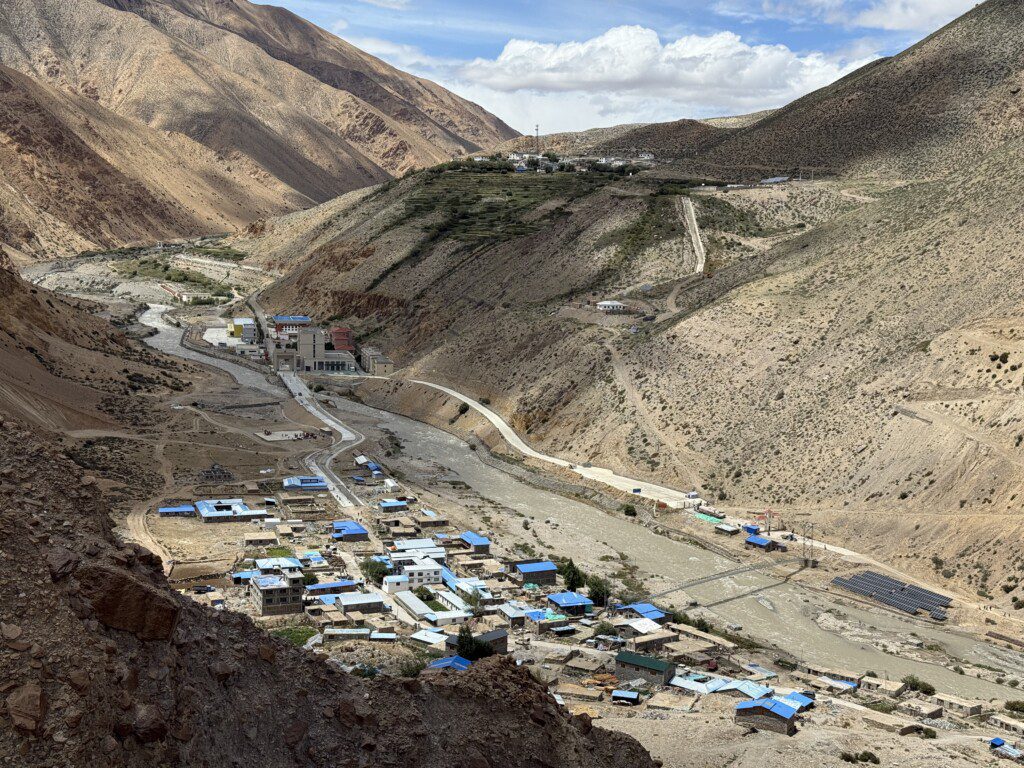
We arrived at a famous sign for GHT trekkers in Hilsa, and spent the afternoon taking photographs and sitting in a tiny shop enjoying soft drinks. While the shopkeeper was absent Mike even sold a packet of biscuits to a local. We prepared for the jeep ride* back the next day, and had the most wonderful veggie dahl bat with red rice in the hotel family’s kitchen.
It was hard to believe it was over, but also a relief, and difficult to explain as hiking each day had become our normal, our life, our routine. The trail ended in Hilsa, but the routine of walking, laughing, and eating thru hiker trash might be a hard one to quit.
*We survived the jeep ride. Just.


1 Comment
By Graeme Gordon
Finally got a moment to catch up on the last few posts. It’s a little sad knowing there won’t be any more blogs or updates. That said, what an incredible journey – and thank you so much for documenting it so wonderfully!
I wonder how the adjustment back to life in Canada will be. I imagine certain things may seem very wasteful, or decadent. But I also imagine you’ll acclimatize to your old life pretty quickly.
Well, I very much look forward to catching up in person in the very near future! Infinite congratulations. Just incredible.